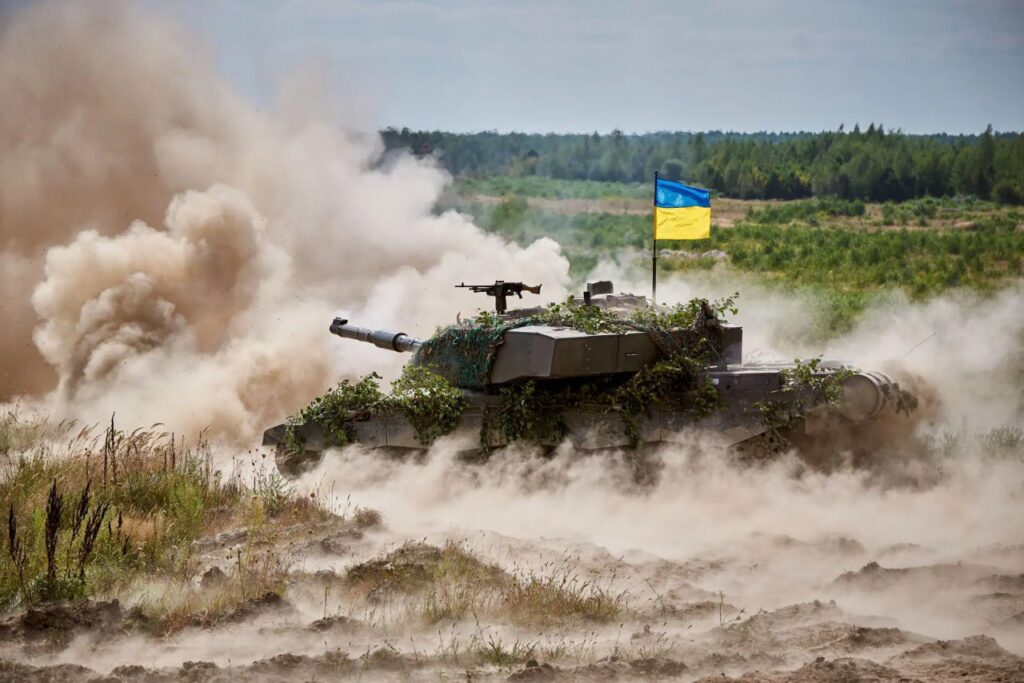A snapshot of recent news from sources around the world on the ongoing Russia-Ukraine war.

Political Developments
Ukraine’s new mobilization law went into effect Saturday as Kyiv tries to bolster its dwindling front line forces. The move comes as Russia launched a new offensive around Kharkiv in northeast Ukraine. The new law includes more financial incentives for soldiers and makes it easier to identify conscripts. Kyiv separately lowered the draft age from 27 to 25, allowed prisoners to join the Army, and increased fines for people trying to avoid the draft.
U.S. officials remain “profoundly concerned” about China’s support of Moscow’s war in Ukraine, arguing Beijing is “feeding Russia’s war machine.” China has contributed to rebuilding Russia’s defense industrial base at a time when Moscow and Beijing are discussing bolstering energy and security arrangements as part of their “no limits” relationship.
British intelligence has gone further, alleging Beijing has provided “lethal aid” for the Russian war effort. U.S. national security adviser Jake Sullivan pushed back on that, however, stating that the U.S. has not seen China provide weapons directly.
Tensions rose again between Russia and the U.K. as Russia reiterated threats of strikes on British targets if Ukraine uses UK-supplied weapons to hit Russia, a response to UK Foreign Minister’s comments earlier in May greenlighting such attacks.
Ukrainian President Volodymyr Zelensky’s five-year term expired on May 20. Ukraine was originally scheduled to see fresh presidential elections in March of this year, but the war has made holding a vote difficult.
Four Russian sources told Reuters that Russian President Vladimir Putin is prepared to accept a ceasefire that would freeze the war along the present battlefield lines. One of the sources, identified only as a senior official who has close ties with Putin, said, “Putin can fight for as long as it takes, but Putin is also ready for a ceasefire – to freeze the war.”
Military Assistance to Ukraine
The U.S. says it has no plans to send military trainers to Ukraine, and that training operations would only be conducted inside the country after the war is over. Currently, U.S. personnel are training Ukraine soldiers at several locations in the U.S. and abroad. NATO members have discussed the possibility of sending troops to Ukraine for non-combat operations.
Ukraine’s first F-16 pilots have completed training in Arizona, U.S. officials said this week. The Ukrainian Air Force is expected to start receiving the jets in the first half of this year. In an interview with Reuters, President Zelensky called for Ukraine’s partners to deliver 120 F-16s. He also urged the West to directly shoot down Russian missiles over Ukraine.
The first batch of 180,000 artillery shells being donated to Ukraine as part of a Czech-led initiative has been contracted and is expected to arrive by June. The delivery of part of a bulk ammunition purchase spearheaded by the Czech government. Prague is working with other nations to secure additional financing for continued artillery production. However, Czech President Petr Pavel conceded that the initiative was not moving as quickly as intended.
New Zealand recently completed a basic training program for more than 3,100 Ukrainian infantry soldiers. The New Zealand Defense Force is planning to launch a more specialized training program for Ukraine troops in July that includes medical and mine warfare training.
The Swedish government announced that it will provide SEK75 billion ($7 billion) in military aid to Ukraine over a period of three years.
The Dutch Defense Ministry said this week that it will provide more YPR-765 armored vehicles to Ukraine. Defense Minister Kajsa Ollongren stated, “These types of armored vehicles are essential for Ukraine. They are agile, can move troops quickly, and can be deployed in exploratory, offensive, and defensive roles. The remotely controlled armament offers the shooter extra safety.”
Lithuania plans to deliver six AMBER 1800 radars to Ukraine, to help improve the country’s air-defense network.
Battlefield Updates
Russia has increased its use of glide bombs to attack targets in Ukraine. More than 200 are believed to have been used over the course of a week in a Russian offensive near Kharkiv, and President Zelensky estimates 3,000 glide bombs were dropped by Russian forces in March alone.
The Ukrainian military has sunk the Tsiklon, a Russian missile-armed Karakurt-class corvette, on May 19. The ship was hit during a Ukrainian strike while docked in Sevastopol, a port on the occupied Crimean peninsula. The Ukrainian military has sunk or severely damaged at least 17 vessels of the Russian Navy’s Black Sea Fleet.
Five Russian Su-25s have been shot down in May 2024, according to the Ukrainian side.
Ukraine has shown off a new USV that features two R-73 air-to-air missiles, capable of providing air-defense for the drone.
Reports on Friday indicate that Ukrainian drones hit a Voronezh-DM ballistic missile warning radar based in Armavir, Russia. Images published online showed the radar suffered damage from the strike.
For 50 years, Forecast International intelligence reports have been the aerospace and defense industry standard for accurate research, analysis, and projections. Our experienced analysts compile, evaluate, and present accurate data for decision makers. FI's market research reports offer concise analysis of individual programs and identify market opportunities. Each report includes a program overview, detailed statistics, recent developments and a competitive analysis, culminating in production forecasts spanning 10 or 15 years. Let our market intelligence reports be a key part of reducing uncertainties and mastering your specific market and its growth potential. Find out more at www.forecastinternational.com



